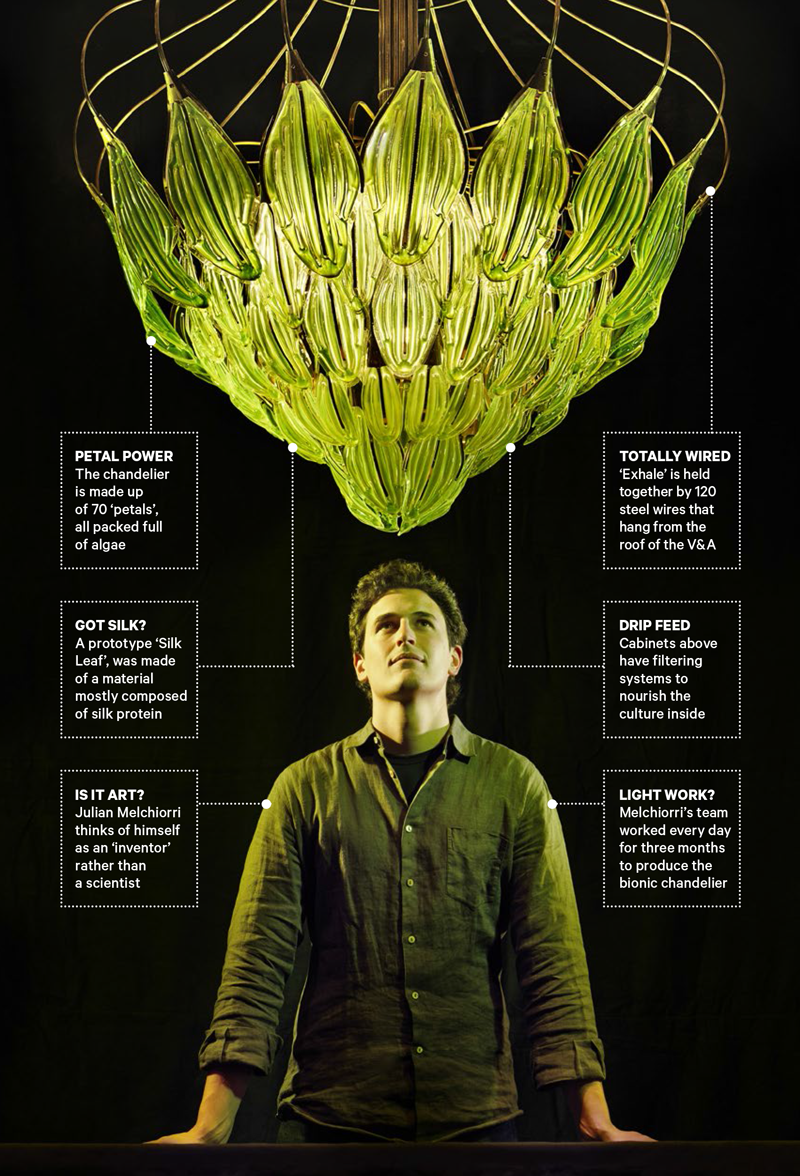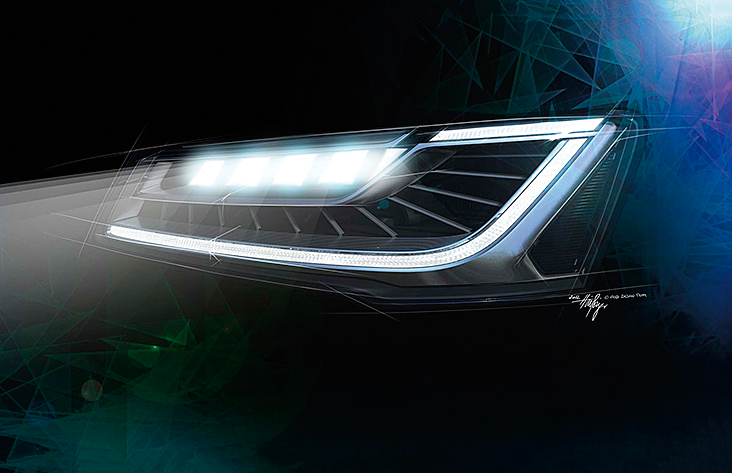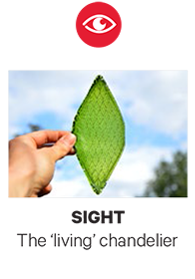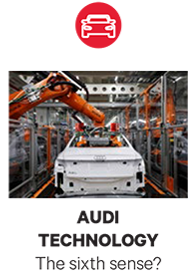The light that never goes out: Julian Melchiorri's 'bionic chandelier'
In the first of a new series on how technology is taking inspiration from our five senses, Audi explores the link between innovation and sight with a feast for the eyes – the world’s first living chandelier
After dark in London’s Victoria and Albert Museum. The doors are locked, but the nightwatchmen and occasional mouse are not alone. A strange new resident – part Invasion of the Body Snatchers pod, part Lalique centrepiece – is hanging at the foot of a grand staircase. It is Exhale, a “bionic chandelier” powered by living algae.
Standing under its eerily iridescent petals is the man who designed – or should that be gave birth to? – this stunning creation, the engineer and designer Julian Melchiorri.
“It is a mix of different technologies,” he explains. “It’s bio-technology, it’s mechanical engineering, there are electrical components, hydraulics and soft robotics.” In other words, according to Melchiorri: “It’s not just a chandelier with some green slime in it.”
Exhale harnesses the millions of microorganisms that make up algae not only to cast light but to support life using one of the oldest chemical processes on earth, photosynthesis.
Activated by a combination of LED and daylight, the algae purify the air by absorbing carbon dioxide and releasing oxygen. “Without light we wouldn’t see, or experience, anything,” says Melchiorri. “I believe that 80% of our experience of reality comes from sight. If we use technology to change how we see, we can change our reality.”
I believe that 80% of our experience of reality comes from sight
Melchiorri has a background in lighting design and is focused not only on sight but a vision – a radical view on how design can combat climate change and waste, led by his company, Arborea. It’s a crusade that has won him high praise and saw the V&A commission this unique new guest – he is the museum’s first ever engineer in residence.
“Three-and-a-half-billion years ago, these same microorganisms created all the air that we now have,” he says. “The chandelier itself exhales oxygen as a waste product, which is inhaled by humans. We get its waste, and it feeds on our waste, carbon dioxide. So there is a constant exchange as in nature, but this time between a living object and a human being.”

Photograph: David Ellis
A living chandelier is only part of a wider trend, according to Melchiorri. “Design is slowly merging with nature. More and more we’re seeing the influence of natural structures in technology, and the use of microorganisms that can perform tasks to help both people and the environment. They’re like micro-engines that can do very complex things at very high speeds.”
For Melchiorri, Exhale is merely the tip of the iceberg for living light sources. “Even in architecture, you could have a building that would basically breathe, purifying the air for street level and bringing oxygen to the people,” he says. “Everything is possible with this.”
Exhale really comes into its own after dark, once its microorganisms have consumed their fill of carbon dioxide and sunbathed in daylight. You might say that Exhale is waking up as darkness falls, after no doubt dreaming of technology and nature in perfect harmony.
Look forward to a clearer future

Audi has long led the way in lighting innovation, with new developments enhancing your driving experience like never before. Here, we take a look at three of Audi’s latest innovations
Light sensors independently activate the appropriate lights. So you won’t have to manually adjust them in poor weather, deteriorating light, tunnels or darkness.
Audi Matrix LED technology (above) is fully automated to anticipate oncoming traffic and corners. It dips sections of your main beam to avoid dazzling other drivers and self-adjusts to illuminate the road as you take a bend.
The Audi R8 boasts Laser Lights to give visibility up to 600m. Each headlight contains four tiny but powerful laser diodes emitting powerful white light. When travelling over 43.5mph outside of urban areas, this creates a “laser spot”, to give incredible visibility for a safer journey. An intelligent camera-based sensor detects other road users and actively adjusts the light pattern to dim the intensity specifically for them.
Making sense of our senses
We cannot control the weather or other drivers, but we can use our senses to react in the optimal manner. Over the coming weeks we introduce inspiring individuals who are pushing the boundaries of technology and how we can use this to enhance our senses.
As Audi continues to integrate “Vorsprung durch Technik” across the range, together we look at how innovation is changing lives.
To stay up to date with Audi’s innovation, explore the range, book a test drive or request a brochure, visit audi.co.uk. For more on the senses go to driving.co.uk/six-senses











